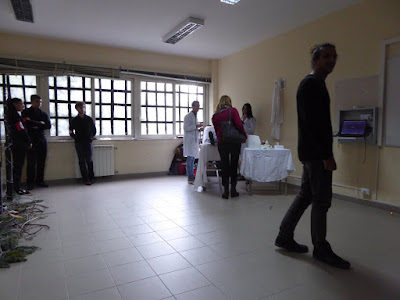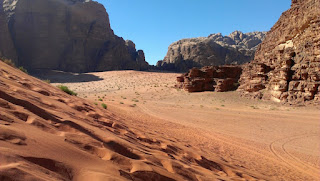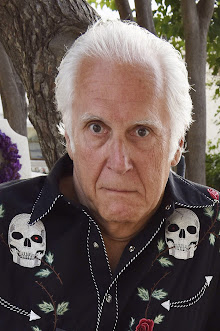Tuesday, January 31, 2017
la Chandeleur, jour de la Crepe addendum politique Française
In two days it's Chandeleur, or Candlemas. The Christian tradition in France started when priests would bless candles for the next year and signal the end of the religious holiday season. It's the day to put away the mangers for next year. Or sort of.
Some say it was started to blot out the Roman pagan traditions existing and others well, only the French would make a day of eating crepes.
Candlemas is always celebrated on February 2nd and—like Christmas, which you know, and Michaelmas, which once celebrated Satan falling into a blackberry bush and getting stuck—was created partly to compete with the Roman holiday Lupercalia, a fertility celebration that also has a purification slant to it. It also involved making a sort of medieval pancake.
Which is fine by me.
The French use this as an excuse to make crêpes. This Jour de Crêpes harkens back to the old Roman pagan pancake ritual and was co-opted thanks to Pope Gelasius I. The idea was that, if you were able to properly flip the crêpe in the air and expertly catch it in the pan, your family would be blessed with plenty for the next year.
The trick is cooking the crepe on one side then flipping it up and over onto the other side. If one does that successfully it's good luck for the rest of the year. And in my friends house, earn a Euro.
I wasn't going to mention politics but this just in from my friend Gilles in Paris concerning the upcoming French election: "the primaries of the socialist party were not very interesting and now it is all back door tactics as the socialist party is the thin ham slice between the 2 bred slices which are Melenchon (very left) and Macron (center or the brinks of socialist liberal, depending of the day)!!! Hamon has pretty no existence as a president candidate, so he has to ally with one of the 2 but none want any link to the party of the current president!!
On the right the conservative Fillon is struggling to get out of 500K€ he gave to his wife (they all do that and that was probably leaked to the news by one of his own party "friend")....
Pretty boring!!! at least things are more fun in the US with daily surprises!!! and only 2 days after these primary elections the only headlines in french newspapers are for your president ;)"
Cara - Tuesday
Monday, January 30, 2017
Twelve Days in Siracusa: The Bad and the Beautiful
Annamaria on Monday



The Beautiful
Beautiful is easy here. It's everywhere you look. Here's the evidence of that: |
| Castello Maniace, in the light of the setting sun |
 |
| Sometimes it was the January weather. But only sometimes |
 |
| But when it was the weather, it was truly beautiful. |
 |
| Everyday it was breakfast at the best cafe, perhaps in the universe. |
 |
| Siracusa's youth gather to watch the sunset over their city's storied port. |
One place, at first, seemed beautiful. And the perfect location for me to write my novel, which begins in 1692. I had rented an apartment, and unbeknownst to me, it was located in a 16th or 17th century palazzo--exactly the sort of place where the main character in my WIP would have lived.
 |
| Inside the street level door is the cortile, open to the sky. |
 |
| Looking back to the street entrance. |
That door in the yellow wall above the archway leads to the room where I slept. I was delighted when I saw it; I had already imagined its exact dimensions and set an early scene in it.
I stayed for a week with visiting friends, but the apartment, though swanky, turned out to be too uncomfortable to bear once I was there alone. Insufficient heating (the weather was remarkably cold for this part of the world) failed to warm the ancient stone walls, and I couldn't sit still and work, though dressed in several layers and wrapped in blankets. I decamped to a hotel and arranged for an early return to Florence and to my own place--far less regal, but one hundred percent comfortable.
The Bad
Mid-Jauary this year had billions all over the world riveted (many in horror) on Washington DC. We here in Italy certainly had that miserable business on our minds, but we were spellbound by a perfect storm of catastrophe. The mood of these events brought me back to my early childhood, when a little girl in California fell into a well and everyone in my house was focused on radio reports of attempts to rescue her, and people in the streets talked of little else.
Starting on 16 January, a series of four strong earthquakes hit high in the Abruzzi, just about simultaneously with a blizzard of unheard of proportions, which dumped more than 15 feet (5 meters) of snow on the area. Thousands were stuck in mangled houses without heat or light or phone service. Then an avalanche buried a small hotel, trapping 30 or more people--families, the staff. Rescue workers could not get to them for more than a day. A few went in on skis, but the wind was too high at first to allow helicopters anywhere near the mountain. And cutting a road in was extremely slow, with a wall of the white stuff dwarfing a huge plow.
 |
| Machines that can quickly clear 15 feet of snow do not exist. |
 |
| Cross-country skiing members of the Vigili del Fuoco reached the site. This one is looking at the roof of a three-story building. |
 |
| They dug out nine survivors, at first with their hands. including three children. Twenty-three people died or are presumed dead. |
The Bad and the Beautiful
In the Cathedral at Noto, we saw sculptures made from pieces of refugee boats that have washed up on Italian shores.
 |
| The brass plate at the bottom says, "Who will pray for those who perished?" |
 |
| "The Wooden Cross" ordinarily refers to the cross of Christ. It breaks my heart that so many who call themselves Christians don't feel this in their hearts. |

My cousin Anna Puglisi teaches in this public school for 14-19 year olds. Please keep in mind that these kids opted to major in Science.

This year, for the second in row, on International Holocaust Remembrance Day, they and their teachers turned their entire school into a Shoa Museum open over the weekend. It was one of the most moving places I have ever been.
 |
| "Not To Be Forgotten" |
 |
| In the classrooms along this corridor,were displays of visual arts, dance, and music. |
 |
| This student made a replica of the little suitcase of a girl whose life and movements she had researched. |
These future scientists dedicated their room to portraying the evil experiments of Mengele, the angel of death.
 |
| The students acted out the history, while the lad in the foreground delivered an emotionally charged narration. |
 |
| Photos of children robbed of their childhoods |
Students had collected identity card photos and the biographies of lost children. Several students gave first person accounts of the lives of child victims. They did this one to one with visitors. Impossible not to weep during their performances.
The students wrote their own lines, made the sets and costumes. And they created and engineered videos. Many of the performances were remarkably intense. I reiterate. This is not a school of the arts. And these are not children of privilege. They are middle class and working class young people whose own hearts have been touched by what they learned and who have developed a passion for communicating these stories to their own community.

Beautiful indeed.
Sunday, January 29, 2017
Writing Out of Season
I’m sure I’m not the
only writer who suffers from the winter blues. In some ways, I suppose it’s the
perfect frame of mind to write a story that is, in places, as dark and harsh as
the weather.
Of course, it doesn’t
help that the section I’m writing at the moment is set in Jordan, in merciless
sunshine and 40-plus-degree heat. Hot countries provoke a different way of
looking at things, and a very different way of life, to temperate climates like
the UK. Can't imagine the Romans built many open-air amphitheatres while they were here.
Our weather here can
be rather wishy-washy. Warm-ish in the summer, cold-ish in the winter, any
extremes invariably take us – and our infrastructure – completely by surprise.
Not that they don’t
experience occasional freak weather in Jordan. When I was last there I remember
tales of tourists being snowed-in to the town of Petra, home of the famous
ancient Rose City, and being taken in by local residents for over a week until
the roads could be cleared.
And in the desert at
Wadi Rum, temperatures at night dropped surprisingly low. Sleeping out under
the stars, I was thankful I packed my foil hypothermia blanket, after reading
about the experiences of British soldiers in the Iraqi desert during the Gulf
War.
When I came to setting
part of my story in Jordan, I wanted to get across as much flavour of the place
as I could, without turning it into regurgitation of a guidebook.
I chose Madaba as one
of the places I wanted to use. Known as the Mosaic City, it boasts some of the
finest ancient mosaic art, and is home to many present-day artisans.
I spent a little time
in Madaba and had pictures of the streets lined with gift stores, could still
smell the hookah pipes and hear the amplified voices of the muezzin calling the
faithful to prayer.
I remember, too, being
saddened by the amount of litter everywhere.
And surprised by the
half-finished buildings, with rebar sticking out of upper storeys. This, I was
told, was so that the owner could put off paying tax on the property as it was
still under construction.
Yes, there were
camels.
Gracious, rather
dignified animals with incredible eyelashes and solemn expressions, who only
made noise when they were disturbed, and then sounded exactly like Chewbacca
from the Star Wars movies.
Not sure I have call
for camels in this story, except to mention them as part of the landscape. I
don’t see Charlie Fox giving chase on a ship of the desert, though.
Maybe next time …
This week’s Word of
the Week is wayzgoose, which was a
holiday given by a master printer to his workforce around the time of St
Bartholemew’s Day in late August. It usually marked the end of the summer and
the beginning of working by candlelight. There have been suggestions that the
word originated because the master printer would give his people a feast, at
which would be served a goose fattened on the stubble fields after the harvest –
wayz being a bundle of stubble or
straw. So, in modern parlance, if your computer printer isn’t working, it’s wayzgoosed!
Saturday, January 28, 2017
My Very First Time
Jeff--Saturday
It's Saturday morning and my best laid plans have left me high and dry (in several manners of speaking) insofar as posting the grand idea I had for today's post. You see, I planned on writing it while flying from New York City to San Francisco for the kickoff of my California Book tour, but fate intervened in the form of food poisoning I picked up at the Newark Airport, and that experience consumed all of my attention for the ensuing six hours. Thus, my first reference to "high and dry."
By the time we gathered the car, the luggage, and the meds available at the nearest pharmacy, we barely had time to shower, regain composure, and drive to Janet Rudolph's Mystery Literary Salon in the hills of Berkeley for a wonderful evening shared with Cara, Lisa Alber, and two dozen inveterate fans of the genre. That's the three of us up above, as photographed by Catriona McPherson.
I'm told the homemade food brought by the guests was terrific, for I dared not partake in even a sip of water (my second high and dry moment).
This morning, stabilized as I feel, if I spend the time writing a blog post as opposed to taking Barbara to the promised San Francisco sights for enduring all she has over the past 24 hours (not ill, thank God, but putting up with one who was), I shall not only be left high and dry, but likely drawn and quartered as well.
Cara, Keith Raffel, Barbara, Frank Price
So, in substitution, I offer you my very first official post as a member of the Murder is Everywhere team. It went up on November 6, 2010, titled, "Mystras and Goethe, Together Again." My how time flies when you're having a good time! Hope you are, too.
*****
"MYSTRAS AND GOETHE, TOGETHER AGAIN"
It’s
Saturday morning and welcome to Greece! I’ll be here every Saturday,
god(s) willing. How I got here (to Greece and MIE) was explained on
Wednesday in a piece I did filling in for Yrsa, so if you’re interested
in that sort of history please go to “What’s in a Name.” For a
spot of more ancient history, please stay here.
*****
"MYSTRAS AND GOETHE, TOGETHER AGAIN"
 |
| A tiny bit of the medieval city Mystras |
 |
| Frescoes at Mystras |
 |
| The Peloponnese |
Modern Sparta
is a place decidedly different in locale and life from its antiquity
namesake. It sits on a plain along the Eurotas River between ribs of
not so distant mountains running north and south. The community is one
based on agricultural, not war, and its groves of oranges and olive
trees support twelve thousand souls still proud of their ancient
heritage.
 |
| Modern Sparta Town Square |
 |
| Mystras Castle Fortress |
 The
old city and castle are wonderfully restored and maintained, and
Mystras’ history reflects that of much of the entire region. Following
the Fourth Crusade the Franks built the fortress to defend the southeast
Peloponnese, but by the mid-13th Century Mystras was in
Greek hands and remained so for 200 years until the Turkish conquest.
Let me put it simply: the goings on and battles during those years
involving, emperors, knights, churchmen, and most other sorts would
cross Dan Brown’s eyes.
The
old city and castle are wonderfully restored and maintained, and
Mystras’ history reflects that of much of the entire region. Following
the Fourth Crusade the Franks built the fortress to defend the southeast
Peloponnese, but by the mid-13th Century Mystras was in
Greek hands and remained so for 200 years until the Turkish conquest.
Let me put it simply: the goings on and battles during those years
involving, emperors, knights, churchmen, and most other sorts would
cross Dan Brown’s eyes.  |
| Hotel Pyrgos Mystra |
In a Trip Advisor moment of
digression, may I suggest you head on to relax in the adjacent more
modern village of Mystras. It has its own quaint charms and one of my
new favorite inns of all time sits there.
 From the mid-14th to mid-15th
Centuries Mystras served as the heart and soul of the Peloponnese, so
much so that at the end of that period some believed Mystras was the
actual site of ancient Sparta, and by the 17th Century that was the generally held belief. It was not until the very beginning of the 18th
Century that Mystras regained its status as a separate and unique
place, a source of mythical inspiration to travelers and artists’ souls.
From the mid-14th to mid-15th
Centuries Mystras served as the heart and soul of the Peloponnese, so
much so that at the end of that period some believed Mystras was the
actual site of ancient Sparta, and by the 17th Century that was the generally held belief. It was not until the very beginning of the 18th
Century that Mystras regained its status as a separate and unique
place, a source of mythical inspiration to travelers and artists’ souls.
So many years deserted stood the valley hills
That in the rear of Sparta northwards rise aloft
Behind Taygetos: whence as yet a nimble brook,
Eurotas downward rolls, and then along our vale
By reed beds broadly flowing, nourishes your swans.
Behind there in the mountain dwells a daring breed
Have settled, pressing forth from the Cimmerian Night,
And there have built a fortress inaccessible,
Whence land and people now they harry as they please.
The one catching my contemplative Goethe moment as that imperceptible dot on the wall below the site's upper parking lot is waving from the very top of the fortress.
—Jeff
Subscribe to:
Posts (Atom)






















.jpg)














